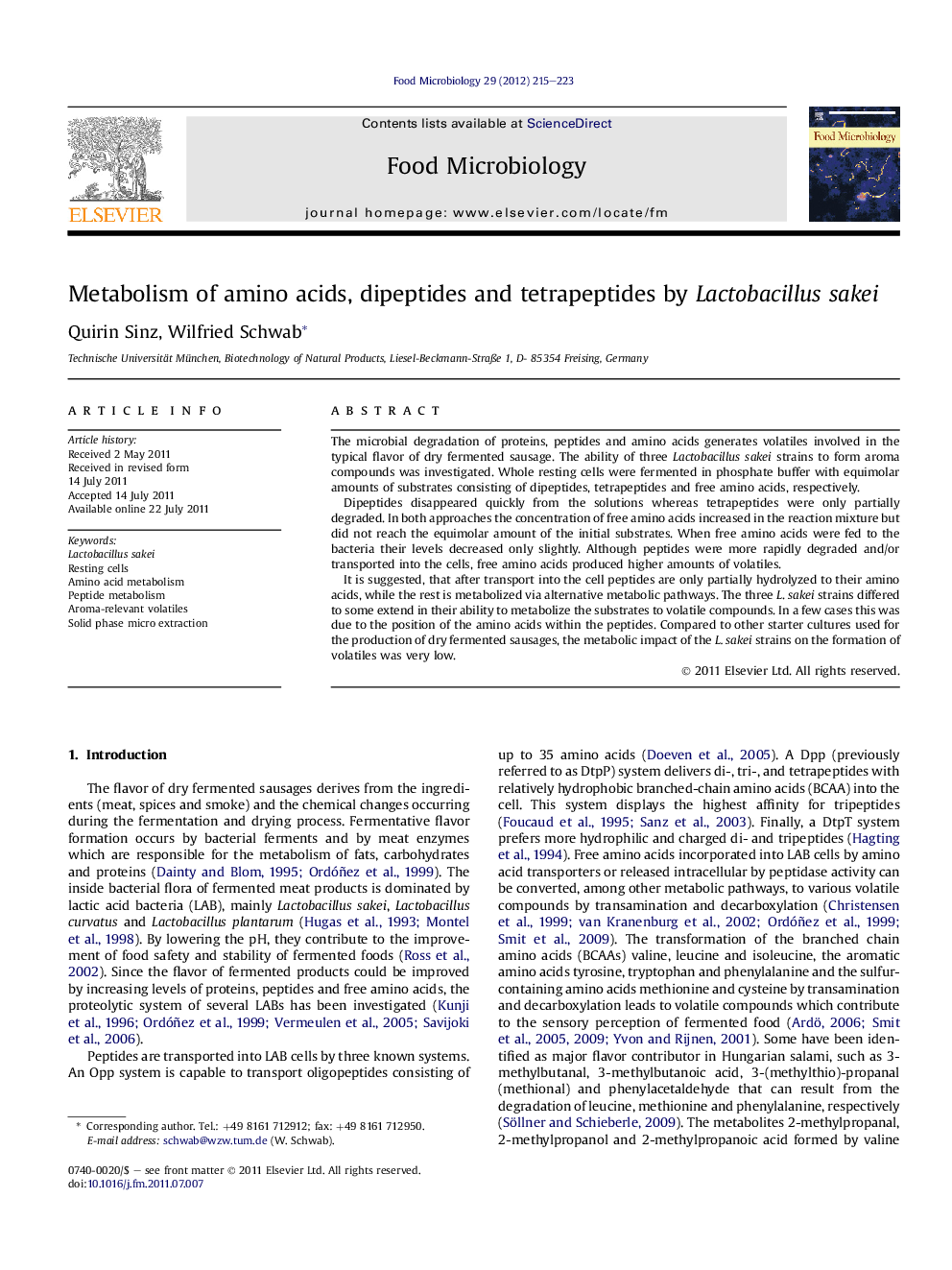| Article ID | Journal | Published Year | Pages | File Type |
|---|---|---|---|---|
| 4363082 | Food Microbiology | 2012 | 9 Pages |
The microbial degradation of proteins, peptides and amino acids generates volatiles involved in the typical flavor of dry fermented sausage. The ability of three Lactobacillus sakei strains to form aroma compounds was investigated. Whole resting cells were fermented in phosphate buffer with equimolar amounts of substrates consisting of dipeptides, tetrapeptides and free amino acids, respectively.Dipeptides disappeared quickly from the solutions whereas tetrapeptides were only partially degraded. In both approaches the concentration of free amino acids increased in the reaction mixture but did not reach the equimolar amount of the initial substrates. When free amino acids were fed to the bacteria their levels decreased only slightly. Although peptides were more rapidly degraded and/or transported into the cells, free amino acids produced higher amounts of volatiles.It is suggested, that after transport into the cell peptides are only partially hydrolyzed to their amino acids, while the rest is metabolized via alternative metabolic pathways. The three L. sakei strains differed to some extend in their ability to metabolize the substrates to volatile compounds. In a few cases this was due to the position of the amino acids within the peptides. Compared to other starter cultures used for the production of dry fermented sausages, the metabolic impact of the L. sakei strains on the formation of volatiles was very low.
► Lactobacillus sakei were fermented with amino acids, di- and tetrapeptides. ► Dipeptides disappeared quickly whereas tetrapeptides were only partially degraded. ► Amino acids were hardly metabolized by the resting cells. ► However, free amino acids produced the highest amounts of volatiles. ► The metabolic impact of the L. sakei strains on the formation of volatiles was low.
